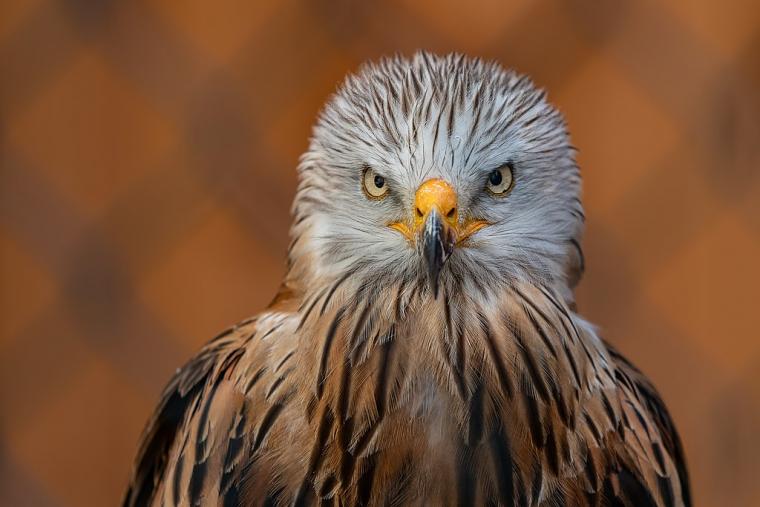Brood Awakening: How red kites weigh risk like feathered economists
Submitted by Michi on 12 August 2025.
 Get the paper!
Get the paper! Photo above: portrait of a red kite (Milvus milvus). Photo: Wikimedia Commons.
Text by: Samuel Sieder, Patrick Scherler, Matthias Tschumi, Martin U. Grüebler
Parental care is a balancing act — parents must protect their young while minimizing risks to themselves, to ensure current, but also future reproductive success. In large raptors like the red kite (Milvus milvus), nest defence can come at a cost, especially when facing dangerous predators. So, what drives a parent to risk more (or less) when such a threat appears?
Two theories, one complex reality
Our new study tackled this question by testing two long-standing concepts from parental investment theory: the “harm-to-offspring” hypothesis, which suggests that parents should defend more vigorously when nestlings are young and most vulnerable, and the “reproductive value” hypothesis, which predicts stronger defence when offspring are older and in better shape and thus represent a greater investment. But here’s the twist — these strategies may not be fixed, and they may change over the course of the nestling period. We suspected that environmental conditions, such as food availability, could shift the balance between the two strategies, because it may alter the condition of the nestlings and thus affect the reproductive value and vulnerability of the broods.
An adult red kite feeding its nestlings, illustrating active parental care during the breeding season. Photo: Camera trap, Swiss Ornithological Institute.
Nest defence and food experiments
To investigate this, we provided red kite breeding pairs in the wild with supplemental food, while others had to rely solely on natural resources. We placed a live eagle owl (Bubo bubo), a natural predator of red kites, near the nests as a decoy to trigger nest defence behaviour. We mounted Dho-gaza type mist nets near the owl and recorded how quickly and how intensely red kite parents approached the “predator” — time to capture and capture success served as proxies for nest defence effort and anti-predator investment.
A live eagle owl (Bubo bubo) positioned near a red kite nest with an adjacent mist net, used to trigger and measure parental anti-predator responses quantified by time to capture and capture success. Photos by Adrian Aebischer
Food changes everything
In nests without extra food, nest defence remained fairly constant throughout the nestling period — suggesting that both hypotheses were in play, counterbalancing each other. But when we provided supplemental food, behaviour shifted: Early in the nestling period, nest defence decreased compared to unsupplemented broods — consistent with reduced offspring vulnerability due to better body condition. Later in the nestling period, defence intensity increased — reflecting higher reproductive value of nearly fledged young in supplemented broods.
This pattern supports the prediction that favourable food conditions reinforce the importance of reproductive value, while poor food conditions increase the importance of offspring vulnerability. In short, parents appear to adaptively re-balance their defensive behaviour depending on both their chicks’ stage of development and the environmental context.
Left: Feeding platform placed near breeding pairs to enhance food availability. Photo by Albert Bach Pagès. Right: Red kite parent displaying nest defence behaviour. Photo by Patrick Scherler
Passive guarding vs. active defence
Importantly, even when mobbing was low, parents often stayed near the nest and visually monitored the predator — a form of passive guarding that may carry lower risk and energy cost. Our results support the idea that red kites, like many other species, employ a flexible set of nest defence strategies, and choose between them based on conditions. High-risk mobbing and low-risk guarding are both tools in their parental care toolkit — and the choice depends on what the parents (and the chicks) can afford to risk.
Why it matters
Our study reveals that anti-predator behaviour in birds is not a fixed trait — it is flexible, and responsive to environmental variation. This has major implications for understanding how bird populations may cope with changing climates and food availability.
In a world where prey populations fluctuate, weather extremes become more frequent, and ecosystems shift, parental decision-making may be pushed in new directions. These behavioural adaptations could have cascading effects, influencing not just individual breeding success, but population dynamics for long-lived raptors like the red kite.
Read the full open access research article here.